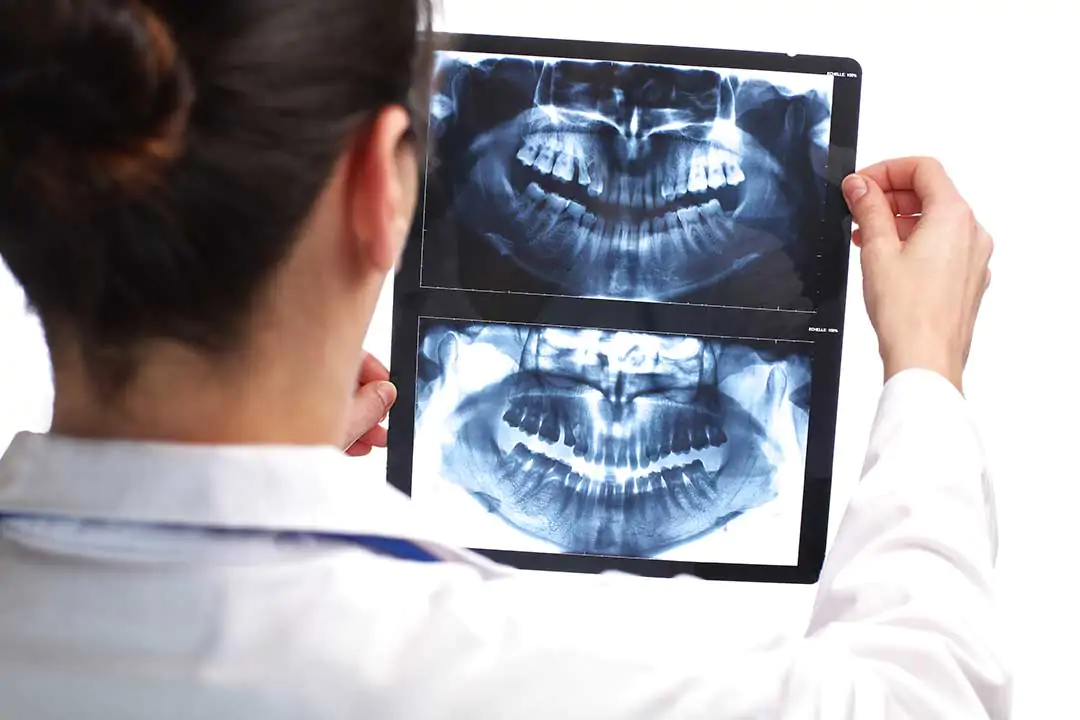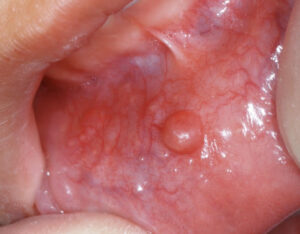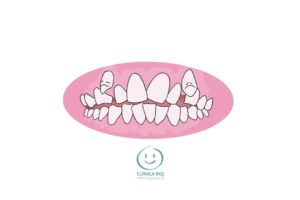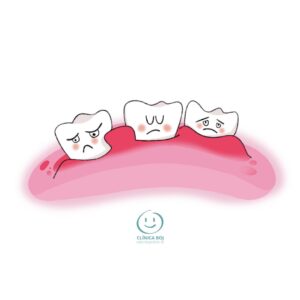How safe are dental x-rays for kids and teenagers?
The importance of dental x-rays during an oral examination
Dental X-rays are normally used to obtain a complete image of the upper and lower crowns and roots of the teeth. This procedure is extremely important during the examination of a child or teenager for different type of treatments to be performed.
The X-ray machine uses a low level of ionizing radiation to go through a patient’s face and the body’s tissues. Then, this produces a visible representation of the internal structure on an X-ray film.
Undoubtedly, some parents are concerned about its use when they go to the children’s dental clinic with their children.
Nowadays, doubts about the safety of X-rays have no place any longer. Presently, modern digital x-ray generate a very low exposure of the patient’s mouth to radiation. This compared to old conventional x-rays.
Possible harmful effects of dental x-rays
In addition, the pediatric dentistry practice has monthly reading sensors and radiation levels are routinely checked, and these are very low. Similarly, x-ray techniques and tools are designed to limit the body’s to the minimal exposure of radiation.
Therefore, every precaution is taken to ensure that radiation exposure to the patient’s head is as low as possible. This is followed according to the ALARA principle.
Generally, a lead apron shield or a thyroid collar gland protector is used for the abdomen and the thyroid gland. Therefore, we can say that dental X-rays are nowadays safe.
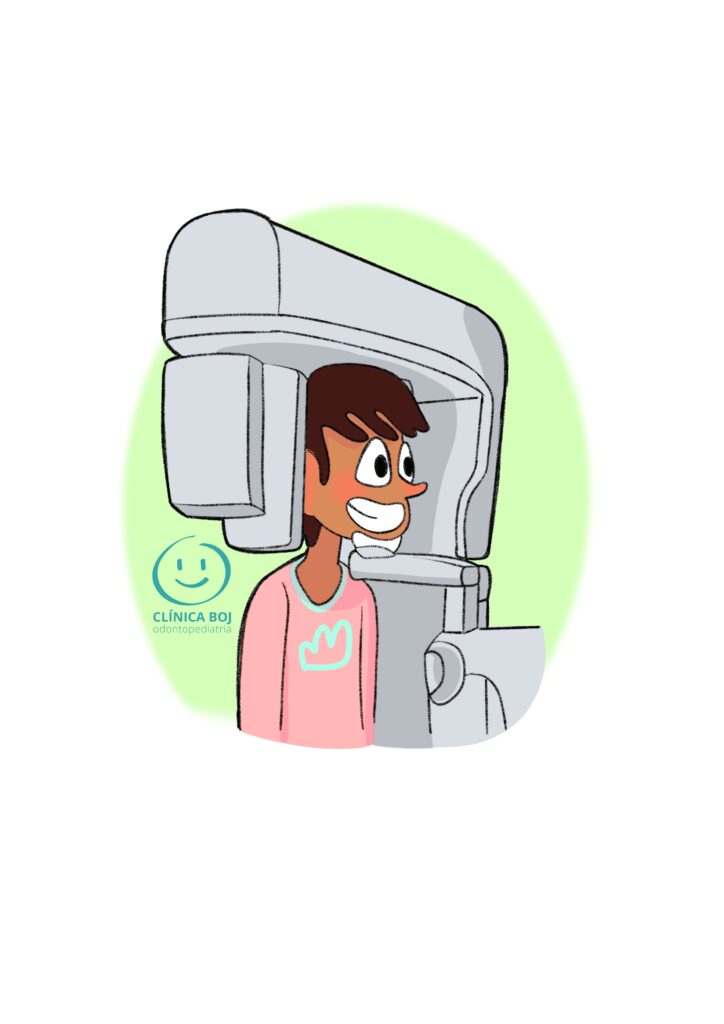
What can be seen on dental X-rays?
Particularly, dental X-rays are a very useful tool for:
(a) detecting caries,
Also known as tooth decay.
b) lesions of the roots,
Certainly, these can cause serious oral health problems.
c) lesions of the bone surrounding the teeth, or
Sometimes consequences of dental traumatisms (impacted teeth).
d) skeletal problems,
This last one, as a necessary preliminary study for orthodontic treatment.
e) periodontal disease,
We can see lesions of the bone surrounding the roots of the teeth. We can also detect if a patient with gum disease develops an initial periodontal disease with little bone resorption.
Undoubtedly, they help the pediatric dentist to detect lesions or diseases that are not clinically visible. This is useful for both, first visits and during routine dental examinations.
What are the two categories of x-ray that dentists take?
Specifically, to reach a correct diagnosis we can not ignore the use of:
Extraoral x rays
Intraoral x rays
In dentistry, and in medicine in general, the objective is to reach an adequate diagnosis. Thanks to it, a correct treatment plan is established.

How many dental X-rays are safe in a year?
The frequency with which dental X-rays should be taken depends on the patient’s risk. Also, the pathology at the patient’s oral cavity should be taken into account for dental controls.
For example, in children at high risk of developing caries lesions. The protocols of the American Academy of Pediatric Dentistry recommend taking x rays more frequently than in low-risk patients.
It will be the pediatric dentist who will review the child’s medical history and examine the child’s mouth. Finally, he/she will decide whether or not x-rays are necessary and what type of x-rays should be taken.
What types of dental X-rays are there?
The types of x-rays that x-ray machines can take in children or teenagers are the following:
a) Panoramic x-rays.
Nowadays, this is a very common dental x-ray. This extraoral x-ray is considered one of the best for gathering information about many different dental issues. It gives global information but not detailed information about any problem. It would indicate when another more specific type of radiograph should be taken.
b) Bitewing radiograph.
Undoubtedly, very useful to see what is happening between the teeth, such as caries between two teeth (interproximal caries).
c) Periapical x ray.
Additionally, another type of intraoral radiograph helpful to analyze the apical (final) zone of the roots.
d) Occlusal x ray.
Placing it on the floor of the mouth, we can detect problems in larger areas. On one side, the upper jaw (maxilla) or, on the other, the lower jaw (mandible).
e) Cephalometry or teleradiography.
Without doubt, absolutely necessary for orthodontic studies, prior to any orthodontic treatment.
f) Dental CT scan
Computed tomography scanners or compatible cone beam CT can be used. This will help us obtain images of supernumerary teeth or show the position of wisdom teeth.
In summary, these digital x-ray images help identify problems caused either by a caries or a trauma. Also, we can analyze from the front teeth to the most back teeth, such as second or third molars.
How long does it take to take a dental X-ray?
Certainly, panoramic dental radiographies are helpful in detecting dental problems, as well as skull bone problems.
They show the upper and lower jaw bones (usually called the mandible). The maxillary sinuses can also be seen.
It takes about five minutes between preparation and acquisition. For the other extraoral xray called teleradiography, the estimation would also be around five minutes.
Furthermore, the other common intraoral x-rays (periapical, bitewing or occlusal) also need around five minutes. As explained, these are used to detect dental problems and the bony structures surrounding the tooth.
In fact, in all of them the X-ray shot itself only takes parts of a second.
References:

